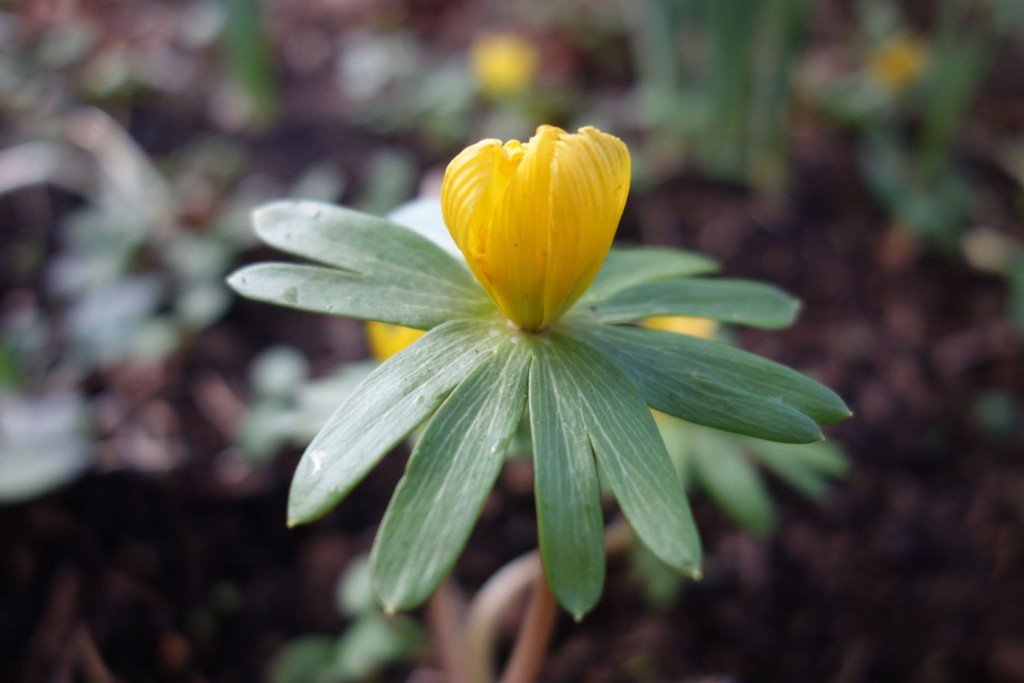Eric Yarnell, ND, RH(AHG)
Though various species of aconite have been considered important medicinal plants by most traditions in areas where it grows, it has become a feared agent to avoid in much of the West. This is unfortunate, because in appropriate doses aconite is generally very safe and has many beneficial actions. Thorough knowledge of the herb is essential to insure safety, but given this, it serves as a potent addition to the botanical armamentarium.
Indications
Aconite has been used as a pain remedy wherever it is found. Headaches, rheumatic pains, arthritis, inflammatory pain, sciatica, pruritus ani, neuralgias and colicky pains have been treated historically with this plant (Sharp, 1933; Felter, 1922). It is active when taken internally and when applied externally. Modern clinical trials are lacking.
Aconite has also been used to reduce extreme fevers (Felter, 1922). This antipyretic action has been confirmed in animal studies, but its exact mechanism remains unknown (Hikino et al., 1979). Interestingly, processed lateral roots of Sichuan aconite are also considered critical in traditional Chinese medicine for helping patients with extreme weakness and cold subsequent to severe diarrhea or vomiting (Benksy et al., 1993).
Allapinine and Arrhythmias
Aconite also affects cardiac function. Overdose, as discussed later, can readily cause arrhythmias, while lower doses can actually correct them. The Institute of the Chemistry of Plant Sciences in Uzbekistan has developed a product dubbed allapinine from the local species Aconitum leucostomum and A. septentrionale, and has shown in multiple clinical trials that it can correct supraventricular and ventricular extrasystoles, atrial fibrillation, Wolff-Parkinson-White syndrome and paroxysmal ventricular tachycardia (Kadyrova et al., 1990; Smetnev et al., 1988). It has been shown effective compared to placebo and several standard anti-arrhythmic drugs. It is not clear whether this product is available in North America.
Preparations and Doses
Aconite preparations made from fresh, raw materials must be handled with extreme care. They are very potent, and only very small doses are necessary for strong action. The therapeutic window is also small with these extracts. A typical adult dose of a full-strength (1:2-1:3 weight:volume) tincture of fresh above-ground parts of Aconitum columbianum is 2-3gtt every 2-3 hours for acute pain or fever. For tinctures made from cooked, dried lateral roots of any aconite, the dose is 3-5gtt every 2-3 hours. Topically, tincture should be mixed with a cream base and applied very conservatively to the skin overlying the affected area. Thus, on average, only 5-10gtt of tincture for every limb or the face should be applied in the cream base. Aconite alkaloids are readily absorbed transcutaneously and can cause systemic toxicity.
Mechanisms of Action
Aconites are members of the Ranunculaceae family, which is known for its diversity and its alkaloids. Aconitine and mesaconitine are two alkaloids found in fresh roots of various species of Aconitum (up to 0.6% of the total weight of the root are alkaloids). These alkaloids and their metabolites act on voltage-sensitive sodium channels in excitable tissues (Friese et al., 1997). Fresh roots with their intact alkaloids are significantly more potent and have higher potential for toxicity than dried or cooked roots. Heat converts aconitine and mesaconitine to benzylaconine derivatives, which are significantly less potent and safer.
Studies in mice have shown that aconite extracts and isolated extracts are potent inflammation modulators, equal in potency to or more so than corticosteroids in blocking angiogenesis in experimental arthritis (Luo et al., 1991).
Toxicology
Aconite is potentially lethal in all forms, though dried and cooked forms are less so. The major problem encountered in overdose is arrhythmias. Doses of 2g of improperly processed root of Sichuan aconite and 10ml tincture have been shown to cause severe but non-lethal arrhythmias in some cases (Kolev et al., 1996; Lin et al., 2004). No long-term effects have been seen in survivors of aconite overdose (Tai et al., 1992). Atropine and systemic lidocaine have been used for overdose in China; other anti-arrhythmic drugs may also help. Charcoal hemoperfusion has also been reported as helpful treatment (Lin et al., 2002).
Aconite can also cause numbness and tingling, weakness, paralysis, anxiety, restlessness and blurred vision (Chan et al., 1994).
Aconite is contraindicated in pregnancy and lactation, and should be avoided for use in children unless absolutely necessary. It should be used with caution for patients with pre-existing arrhythmias.
 Eric Yarnell, ND, RH(AHG) is a graduate of Bastyr University. He completed a two-year residency with Silena Heron, ND, and served as chair of botanical medicine at SCNM. He is past senior editor of the Journal of Naturopathic Medicine. Dr. Yarnell is a founding member and current president of the Botanical Medicine Academy and author of numerous textbooks and articles, including Naturopathic Urology and Men’s Health, Naturopathic Gastroenterology and Clinical Botanical Medicine. His area of clinical focus is urology and men’s health. He is assistant professor in botanical medicine at Bastyr University.
Eric Yarnell, ND, RH(AHG) is a graduate of Bastyr University. He completed a two-year residency with Silena Heron, ND, and served as chair of botanical medicine at SCNM. He is past senior editor of the Journal of Naturopathic Medicine. Dr. Yarnell is a founding member and current president of the Botanical Medicine Academy and author of numerous textbooks and articles, including Naturopathic Urology and Men’s Health, Naturopathic Gastroenterology and Clinical Botanical Medicine. His area of clinical focus is urology and men’s health. He is assistant professor in botanical medicine at Bastyr University.
References
Bensky D et al: Chinese Herbal Medicine Materia Medica, revised ed, Seattle, 1993, Eastland Press.
Chan TY et al: Herb-induced aconitine poisoning presenting as tetraplegia, Vet Hum Toxicol 36:133-4, 1994.
Felter HW: Eclectic Materia Medica, Pharmacology and Therapeutics, Sandy, 1922, reprinted 1998, Eclectic Medical Publications.
Friese J et al: Aconitum sp. alkaloids: The modulation of voltage-dependent Na+ channels, toxicity and antinociceptive properties, Eur J Pharmacol 337:165-174, 1997.
Hikino H et al: Pharmacological actions of Aconitum roots, Yakugaku Zasshi [in Japanese] 99:252-63, 1979.
Kadyrova MM et al: Effect of a new anti-arrhythmia drug allapinin on hemodynamics in patients with a persistent form of atrial fibrillation before and after restoration of sinus rhythm, Kardiologiia [in Russian] 30(4):87-91, 1990.
Kolev ST et al: Toxicity following accidental ingestion of Aconitum containing Chinese remedy, Hum Exp Toxicol 15:839-842, 1996.
Lin CC et al: Acute aconitine poisoned patients with ventricular arrhythmias successfully reversed by charcoal hemoperfusion, Am J Emerg Med 20:66-67, 2002.
Lin CC et al: Clinical features and management of herb-induced aconitine poisoning, Ann Emerg Med 42:574-9, 2004.
Luo B et al: Inhibitory effects on angiogenesis and pouch fluid exudation by aconite alkaloids in adjuvant-induced inflammation of the mouse, Phytother Res 5:231-3, 1991.
Sharp WHH: Aconite in neuralgia, Eclectic Med J p62, 1933.
Smetnev AS et al: Study of the comparative anti-arrhythmic effectiveness of allapinin, ethacizine and mexitil in patients with ventricular disorders of cardiac rhythm, Ter Arkh [in Russian] 60(8):34-8, 1988.
Tai YT et al: Cardiotoxicity after accidental herb-induced aconite poisoning, Lancet 340:1254-6, 1992.





